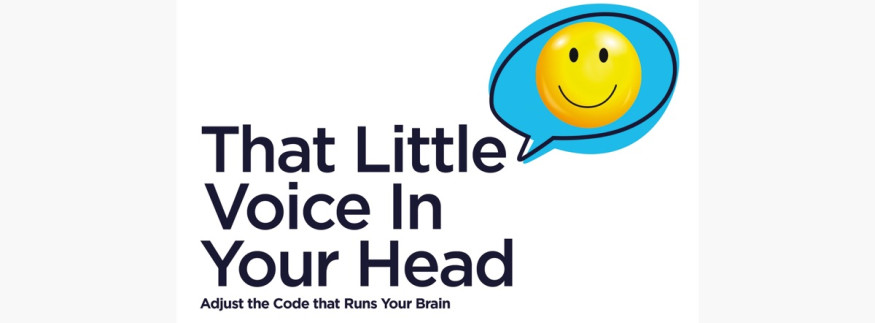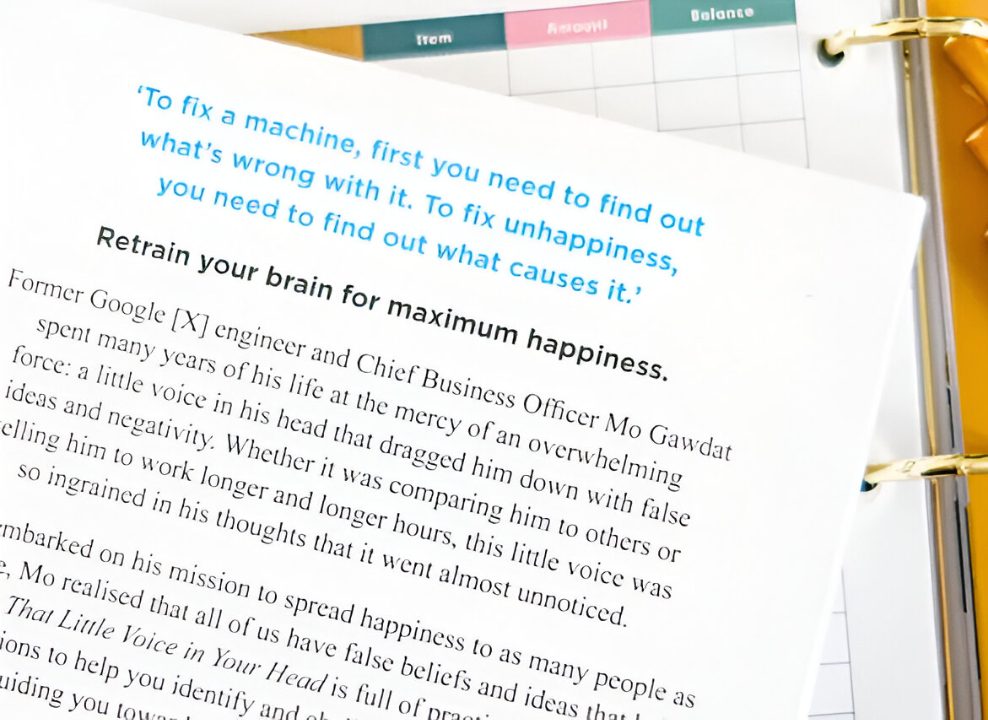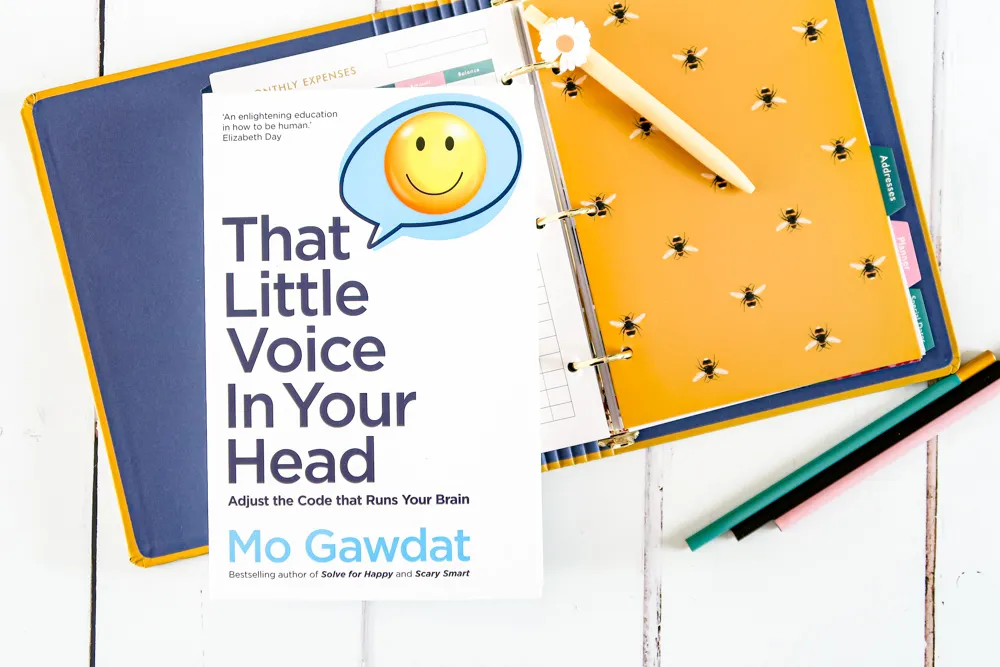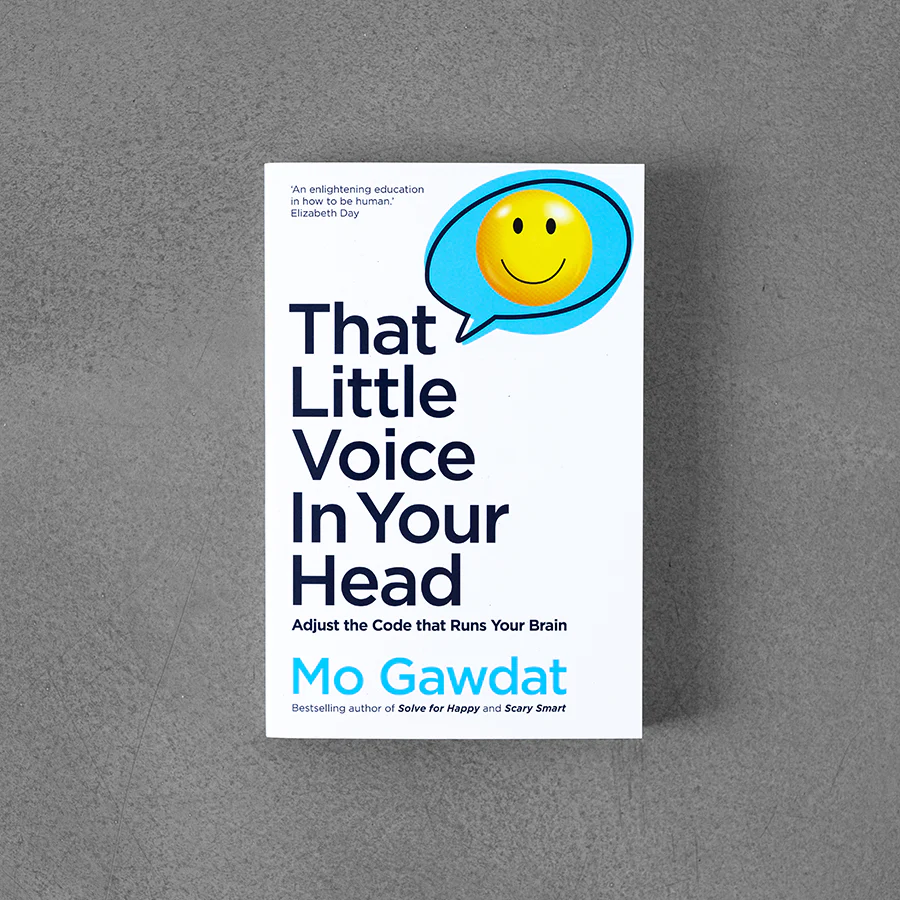That Little Voice in Your Head: Why You Should Read Mo Gawdat’s Manual for a Calmer Mind
book review Mo Gawdat Self-Help Books That Little Voice in Your Head
Aya Gamal
Image via Apple Books
We all live with it: that constant stream of thoughts, doubts, worries, judgments, and replays running through our minds. But what if we told you that that little voice in your head isn’t really “you,” and you can actually retrain it to serve you better?
That’s exactly what Mo Gawdat explores in his brilliant, practical book That Little Voice in Your Head: Adjust the Code That Runs Your Brain. Drawing from neuroscience, personal development, and years of experience as a former Google X executive, Gawdat gives us a user-friendly manual for rewiring how we think and, ultimately, how we live.
Here’s why we believe this book is a must-read and what you’ll gain from it.
The Core Idea: Your Brain Runs Like Software; Update the Code
Gawdat compares the human brain to a supercomputer, noting that every thought, feeling, and reaction is the result of the “code” we’ve picked up through life, including conditioning, culture, trauma, and repetition.
The problem? That code is often outdated, flawed, or downright harmful. And over time, we stopped challenging it.
What if we could debug that code? What if we could reprogram our brains to reboot with compassion and calm, rather than fear, overthinking, and self-criticism?
The Book Is Split Into 3 Power-Packed Parts:
Image via Totally Booked
Part 1: Why We Suffer
Our thoughts are shaped by distorted inputs and past conditioning.
We identify too closely with the voice in our head, assuming it’s always right or helpful. Also, most of our mental suffering is caused by unconscious, reactive programming.
Part 2: The Mechanics of Thought
You learn how to observe your thoughts without being consumed by them.
Gawdat introduces “Becky,” a name he gives to the voice in your head to help you relate to it more objectively and with humour.
He teaches how to break out of overthinking loops and shift toward constructive, present-moment thinking.
Part 3: Rewriting the Code

Image via Totally Booked
Here’s where it gets practical: Gawdat outlines four powerful “thinking styles” that help rewire your brain:
1- Experiential Thinking
Focus on the present moment using your senses; observe details, breathe, and take notes. It anchors you in reality.
2- Problem-Solving Thinking
Use this flow:
– Is the thought true?
– Can I change it?
– If not, can I accept it?
3- Flow State Thinking
Dive deeply into focused, challenging tasks that absorb your attention. It naturally clears mental clutter.
4- Giving
Kindness is a mental reset. When you help others, even in small ways, you change your internal state.

Image via BBC
What Makes This Book Unique?
In a crowded space of self-help and productivity books, That Little Voice in Your Head stands out for a few powerful reasons:
1. It Blends Neuroscience with Heart
Mo Gawdat isn’t just theorising; he has spent years studying the brain, happiness, and behavioural science. But what sets him apart is his ability to translate complex neuroscience into simple, relatable tools. He backs his ideas with science without sounding like a textbook.
2. It’s Not About ‘Positive Thinking’, It’s About Real Thinking
Many self-help books push you to “just think positively.” Gawdat goes deeper. He teaches you how to understand the structure of your thoughts, question them, and replace the faulty ones. It’s not about pretending everything is okay; it’s about coding your brain to handle anything that comes your way.
3- The Voice Has a Name
By personifying the inner critic as “Becky,” Mo makes it easier to create distance from your thoughts. It’s a small trick with a big impact; it helps you stop identifying with every anxious or negative thought and start managing them instead.
4- It’s Deeply Practical
This book gives you actual tools you can start using right now: the “Is it true? Can I change it? Can I accept it?” model, 25-minute awareness exercises, and a menu of four positive mental modes to shift into when your brain spirals.
5- It’s Written with Empathy
Mo Gawdat’s personal story (including the tragic loss of his son Ali) infuses the book with a rare authenticity. He’s not preaching from a pedestal. He’s someone who’s been broken and rebuilt himself. His voice is kind, humble, and funny. You feel like you’re being guided by a wise friend who’s walked the path before you.
Image via Book Therapy
Final Thoughts
This book isn’t just self-help fluff. It’s an operating manual for your mind, practical, science-backed, and surprisingly fun to read. Mo Gawdat writes with warmth, clarity, and a deep understanding of what it means to be human in the age of overwhelm.
If you’ve ever felt trapped by your own mind, this book will set you free.
Do yourself a favour: read it, practice it, and pass it on. Your future self will thank you.
recommended
 City Life
City Life
Cairo’s Boutique Hotels: The Revival of Heritage Buildings
Boutique Hotels in Cairo city life +2 Arts & Culture
Arts & Culture





